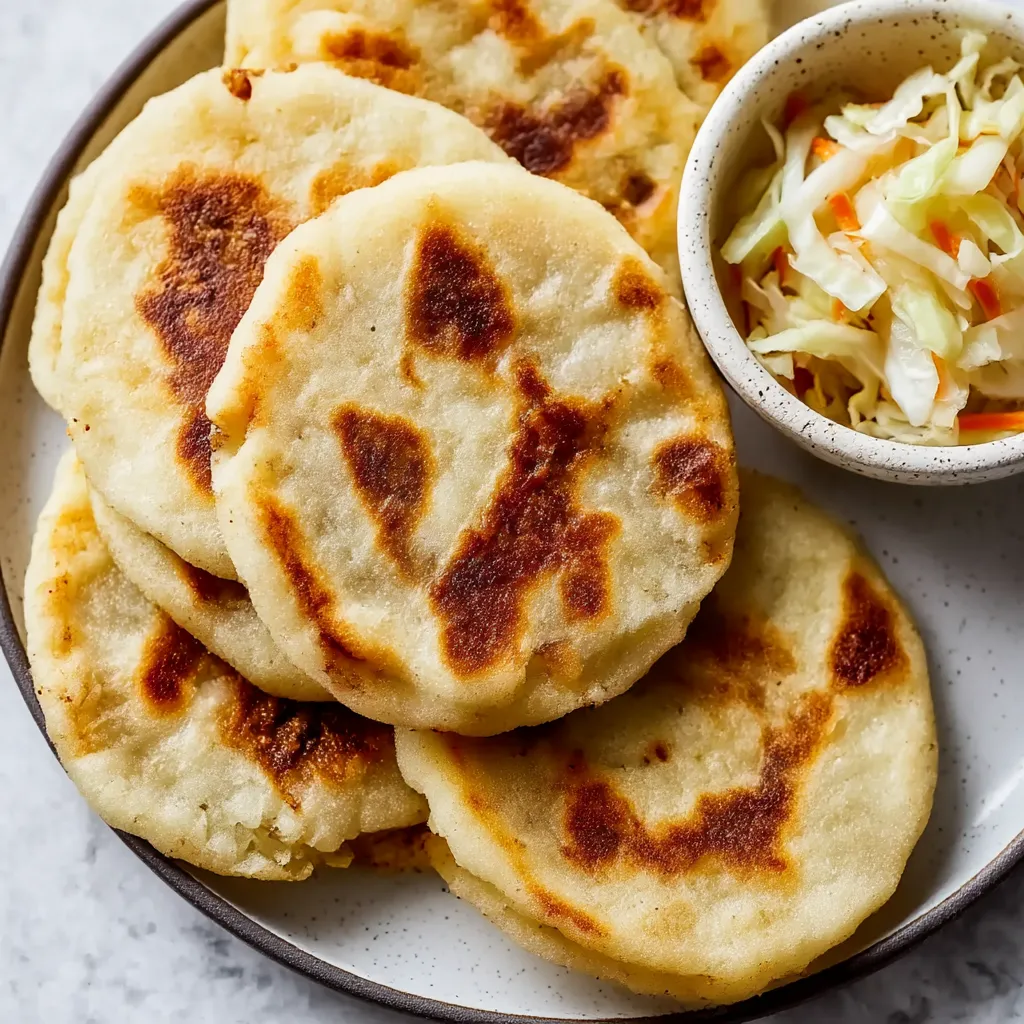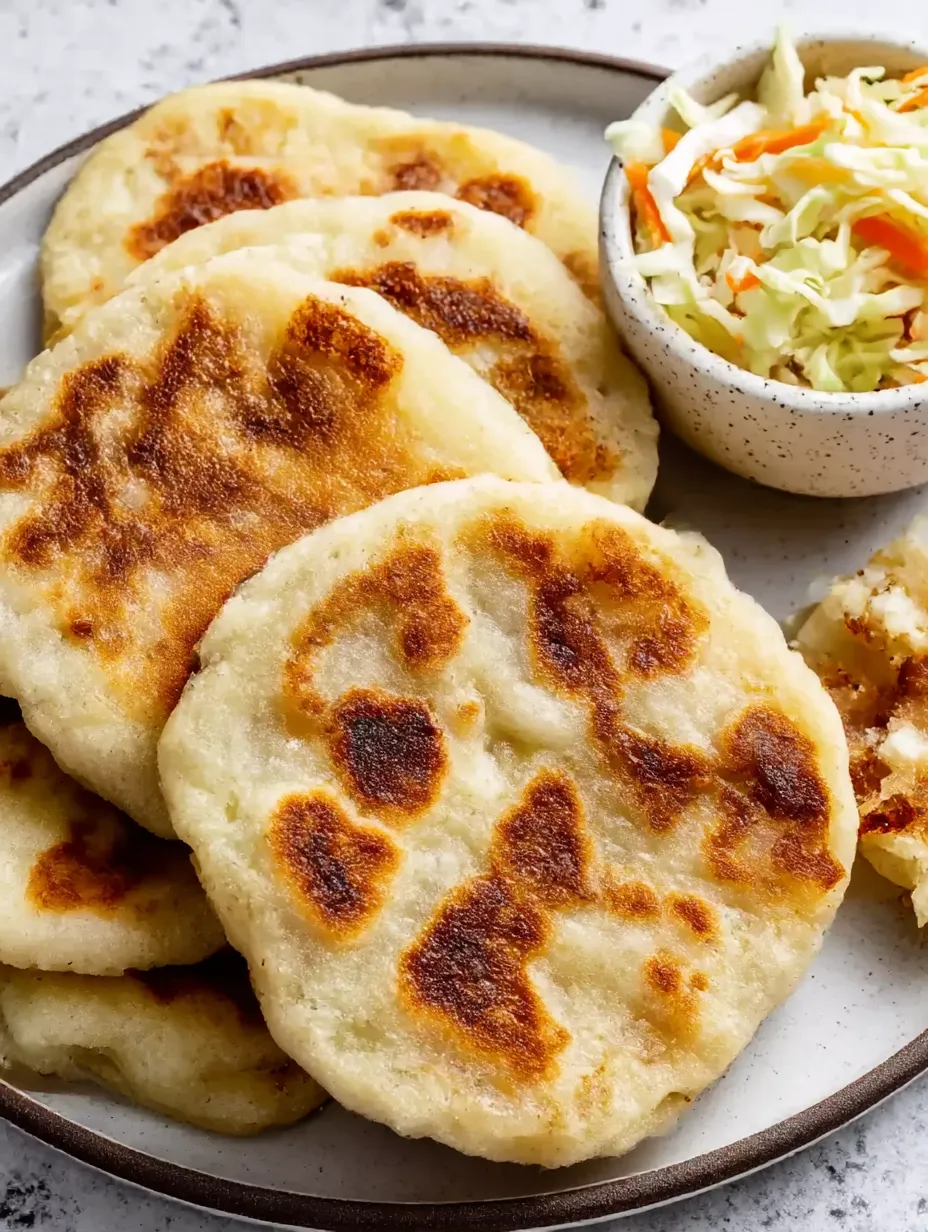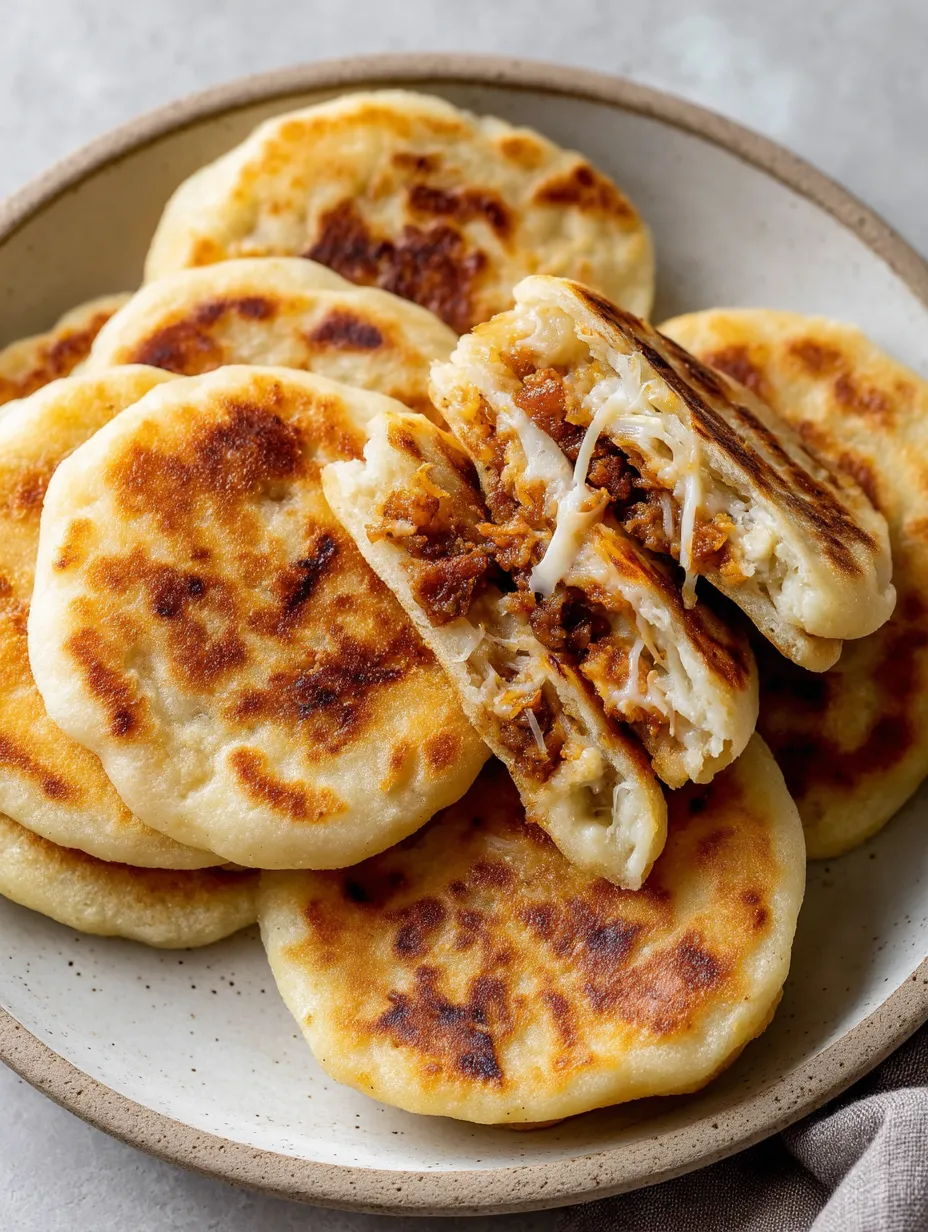 Pin it
Pin it
This classic El Salvadoran pupusa technique makes fluffy corn tortillas stuffed with flavorful beans and gooey cheese. I picked up this genuine method from my next-door neighbor whose relatives brought their family tradition directly from El Salvador. The mix of the crunchy outer shell and melty inside makes these perfect for any time you're hungry.
I first whipped these up for a block party and they vanished right away. They've become my favorite comfort dish whenever I want something filling but don't want to spend hours cooking.
Ingredients
- 3 cups masa harina: forms the traditional corn base - grab finely ground for smoothest results
- 2 teaspoon salt: brings out the corn taste in the dough
- 2 ¾ cups warm water: gets the masa working for the right texture
- 2 tablespoon avocado oil: adds a mild taste for cooking
- 15 oz refried beans: makes the smooth part of the filling
- 1 packet chicken seasoning: try Goya brand for the real deal flavor
- 1 cups shredded mozzarella cheese: gives that perfect pull when melted
- ½ head green cabbage: creates the foundation for curtido topping
- 1 large carrot: brings natural sweetness to the curtido
- ½ onion: adds a kick to balance the curtido mix
- White vinegar: creates that distinctive zip in the curtido
Step-by-Step Instructions
- Make the Curtido:
- Get water boiling in a big pot and toss in cabbage until it softens. Save half cup of the water before draining. Mix cabbage with carrot onion salt vinegar and the hot water you kept in a bowl. Let it sit while you make the pupusas so flavors can blend. It gets tastier the longer it waits.
- Create the Filling:
- Stir together refried beans chicken seasoning and cheese until everything's mixed well. You want it thick enough to scoop without running but not so stiff it rips the dough. The seasoning really makes simple stuff taste amazing.
- Work the Dough:
- Put masa harina and salt in a big bowl. Slowly pour in warm water a cup at a time while mixing with your hands. Good dough feels like play dough soft and bendy without sticking to fingers. If it seems dry just add water a spoonful at a time until it feels right.
- Shape the Pupusas:
- Grab a handful of dough and pat it into a round shape about 4 inches across. Make a little dent in the middle with your fingers. Spoon 1 to 2 tablespoons of filling into the center then carefully pull edges up to wrap the filling inside. Softly press between your hands to flatten into a disc about half inch thick making sure filling stays inside.
- Cook Them Up:
- Warm oil in a cast iron pan over medium heat. Add pupusas without crowding them cooking 2 to 3 minutes each side until they turn golden with crispy edges but stay soft inside. A perfect pupusa looks lightly browned outside with fully melted cheese inside.
- Ready to Eat:
- Set hot pupusas on plates topped with curtido and salsa roja if you've got it. The mix of warm pupusa with cool tangy curtido makes that amazing taste combo Salvadorans have loved for years.
 Pin it
Pin it
What I love most is when cheese sneaks out during cooking and makes those crunchy cheese bits on the edges. My kids always grab for these pieces which reminds me how my grandma would save the crispy parts just for me back in the day.
Storage Tips
You can keep extra pupusas in a sealed container in your fridge for about 3 days. The trick to warming them up is using a dry pan on medium heat instead of the microwave which makes them mushy. If you want to save them longer shape the raw pupusas put parchment paper between them and stick them in a freezer bag for up to 3 months. Cook them straight from frozen just adding an extra minute per side. Keep the curtido in your fridge separately where it'll slowly ferment and actually taste better as days go by.
Troubleshooting Common Issues
When your dough keeps breaking it needs more water. Just add a spoonful at a time until it feels like play dough. If filling bursts out while cooking you probably stuffed too much inside or didn't close it well. Start with smaller amounts of filling till you get the hang of it. Many folks make pupusas too thin which lets filling break through so try keeping them about half inch thick for best results. Don't worry if your first batch isn't perfect making pupusas gets easier every time as your hands learn the motions.
Cultural Significance
Pupusas stand as El Salvador's national food going back more than 2000 years to before Columbus arrived. The Pipil tribes first made them stuffed with flowers and local veggies. Now they stand for cultural heritage among Salvadorans everywhere with whole festivals celebrating this simple but beloved food. Back in 2005 El Salvador's government named the second Sunday in November as National Pupusa Day showing how much this dish matters to their identity. People created curtido to add freshness and help with digestion turning pupusas into a complete balanced meal.
 Pin it
Pin it
Frequently Asked Questions
- → What exactly is masa harina?
Masa harina is a finely milled corn flour treated with limewater, a common base for Latin American foods like tortillas and pupusas.
- → Is it naturally gluten-free?
Totally! Masa harina is made from corn, so pupusas are a great gluten-free option.
- → What’s curtido, and how’s it eaten?
It’s a Salvadoran-style pickled slaw made using cabbage, carrots, and onions. It’s crunchy, tangy, and perfect with pupusas.
- → Can I switch up the fillings?
Absolutely. Popular options are zucchini, pork, or mixing in other veggies and cheese to suit your taste.
- → What’s the best oil for frying these?
Avocado oil works great, but neutral options like vegetable or canola oil also do the job well.
